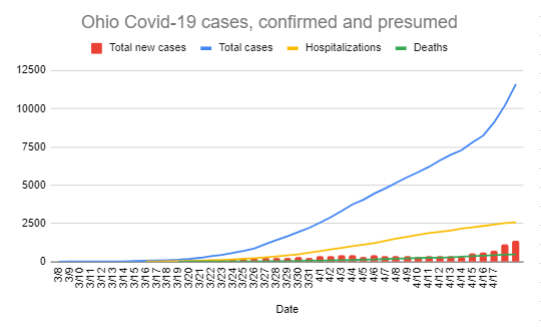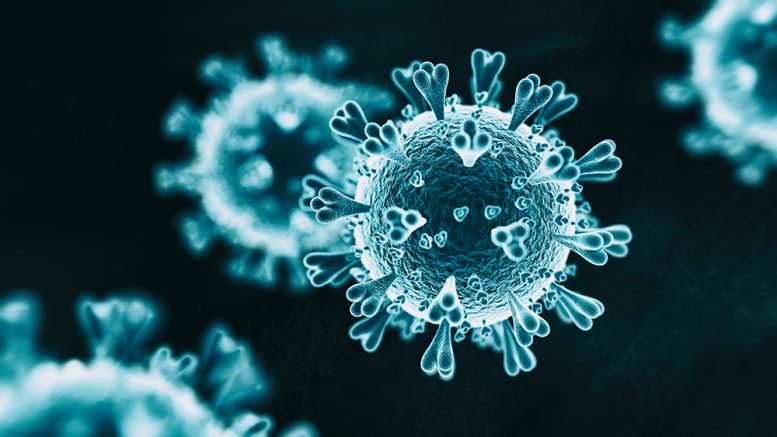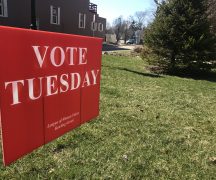Ohio Capital Journal
Ohio’s curve might be un-flattening.
State health officials are detecting COVID-19 cases at an increasing pace, as Gov. Mike DeWine is set to begin a phased-in reopening of the economy beginning May 1.
After a slow start in early April, officials have reported increasing amounts of new cases for the last six days in a row, five of them setting high watermarks for most cases reported in a 24-hour period.Jake Zuckerman@jake_zuckerman
New Ohio coronavirus data:
-11,602 confirmed/probable cases (1,380 in last 24 hours)
-2,565 hospitalizations (46 new)
-765 ICU admissions (5 new)
-471 dead (20 new)
Six days in a row of increasing case counts

38Twitter Ads info and privacy58 people are talking about this
On Sunday, the Ohio Department of Health reported more than 11,600 confirmed and probable cases in Ohio – 1,380 of them were reported since Saturday afternoon.
At least 471 Ohioans have died from confirmed and probable cases. More than 2,500 have been hospitalized.
About 75% of those who’ve died were 70 and older. Their median age is 79.
The disease has wreaked havoc especially on Ohio’s prisons, nursing homes, and black residents.
In prisons, 2,400 inmates have tested positive for COVID-19 as of Sunday since the first case was detected March 29. Six have died. Meanwhile, at least 218 workers have tested positive, one of whom has died. Twenty state prisons are on institution-wide quarantines.
At Marion Correctional Institution, a whopping 1,828 inmates inside have tested positive, along with 109 workers, as of Saturday. There are about 2,500 total inmates inside, as of March.
Much of the increasing daily caseload can be attributed to prisons. Sunday’s release detailed 959 new inmate cases in Ohio prisons. Friday’s release contained 749 new inmate cases as well.
An Ohio prisons spokeswoman did not respond for comment.
In nursing homes, The Columbus Dispatch reported at least 826 residents were infected as of Thursday. Almost 90 were dead.
Since releasing the nursing home cases on its website Thursday, the state Department of Health has stopped listing cases associated with nursing homes.
“We took it down because we had several inaccuracies,” said Melanie Amato, an ODH spokeswoman. “Once we verify the information we will put it back up.”
Another troubling trend: black people represent 21% of the total infected population, despite comprising 13% of the general population. However, race is unknown in 21% of cases.
Grzegorz Rempala, a researcher at Ohio State University’s infectious Disease Institute, led a research team that built a model to predict the spread of the virus. He said he hasn’t seen anything to believe the outbreak is picking up.
He said an expanded case definition (the CDC now recommends counting “probable” cases that have not been confirmed via lab testing), as well as increasing testing in closed communities like prisons, may be making for the appearance of growth but not any real acceleration.
“We very well may be seeing combined effects of those factors as increases in daily counts,” he said in an email. “I would not be concerned as long as we do not see an increase of hospital admissions.”
Indeed, hospitalizations from COVID-19 have been on the downturn. Sunday’s data reported 20 new hospitalizations. In early April, as many as 120 people on average would be hospitalized per day.
William Miller, an epidemiologist at OSU, said he’s puzzled by the new data, but expects that new testing is skewing the numbers.
“The steadiness of the hospitalizations and ICU suggest to me that there is a disconnect between the test numbers in the past few days and the hospitalizations,” he said. “Now, it is possible that we’ll see some surge in a few days but I think we’d have seen some indication of that.”
ODH Director Dr. Amy Acton has said hospitalization data tends to lag new case data by about a week or two.
For an economy to re-open in any serious way, experts agree on a need for more widespread testing. About 3,000 Ohioans per day have been tested since April 1.
“I don’t have a number that I can give you,” Miller said when asked what kind of testing capacity would be needed to open the economy.
“But I would say that we’ll need more than that. We’ll have a lot of testing of people who have been exposed, in addition to those that are ill. All of the contact tracing to identify cases, and isolate them, and to identify exposed people to put under surveillance will depend heavily on testing.”
On Sunday morning, DeWine said in a televised NBC interviewhe wants the Food and Drug Administration to approve a new technology that he says could double or triple the testing threshold “virtually overnight.”
He later said on social media he had a “very positive” phone call with the FDA regarding comments made in the interview. Governor Mike DeWine✔@GovMikeDeWine
I was happy to get a very positive phone call just a short time ago from @US_FDA regarding my comments this morning on @MeetThePress. Watch below. #InThisTogetherOhio https://twitter.com/MeetThePress/status/1251885293784969222 …Meet the Press✔@MeetThePressWATCH: Ohio Gov. Mike DeWine (R) says “I could probably double, maybe even triple testing in Ohio virtually overnight” with help from the FDA.@GovMikeDeWine: “We really need help. [If] anybody in the FDA is watching, this would really take our capacity up literally overnight.”2,257Twitter Ads info and privacy
#InThisTogetherOhio https://twitter.com/MeetThePress/status/1251885293784969222 …Meet the Press✔@MeetThePressWATCH: Ohio Gov. Mike DeWine (R) says “I could probably double, maybe even triple testing in Ohio virtually overnight” with help from the FDA.@GovMikeDeWine: “We really need help. [If] anybody in the FDA is watching, this would really take our capacity up literally overnight.”2,257Twitter Ads info and privacy
***
More from Ohio Capital Journal:
Week 1 of Economy Recovery Task Force: a parade of white, male, GOP donors
Jason Duff is a small business developer in Bellefontaine. David Waikem works for a family-owned car dealership in Massillon. Bob Hager is the president of a workers uniform supplier in Wapakoneta.
These Ohioans have several things in common: all three have donated to Ohio Republican candidates, and all three were recently invited to speak directly to lawmakers about how the economic shutdown is hurting their businesses.
They were among the initial slate of guests who testified before the Ohio House of Representatives’ Economic Recovery Task Force. The early group of 25 presenters has been strikingly homogeneous, a review from the Ohio Capital Journal shows.
All 25 are white males. A review of campaign finance data shows nearly all of them have financial ties to the Ohio Republican Party. READ MORE





